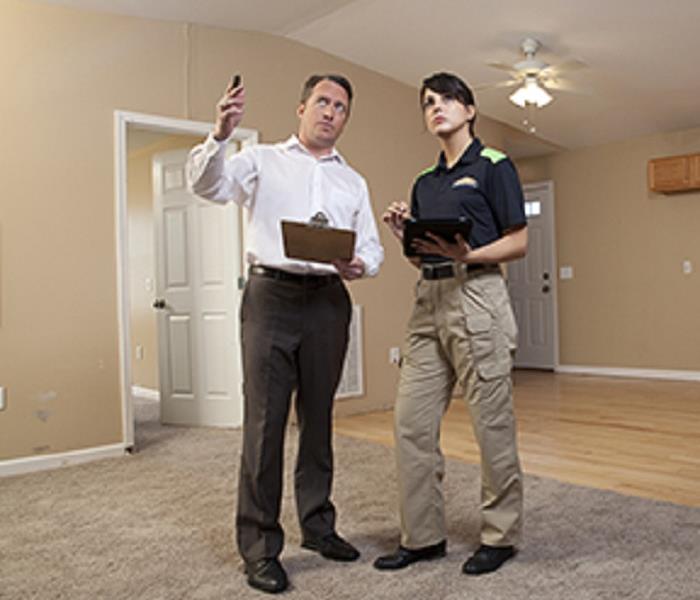Helpful Tips to Keep Your Home and Family Safe from Carbon Monoxide Poisoning
9/19/2016 (Permalink)
Carbon monoxide is often call “The Invisible Killer”. It is an odorless, colorless gas created when fuels (including: wood, natural gas, gasoline, propane, methane, and oil) burn inefficiently. Carbon monoxide is particularly dangerous because it can be a bi-product of using many household heating or cooking devices. It can be ingested into your body by simply breathing. Carbon monoxide poisoning is often times confused with flu symptoms, food poisoning and other illnesses. Some symptoms include: nausea; shortness of breath; dizziness; light headedness; headaches (any combination of these symptoms). High levels of carbon monoxide can be fatal.
- Carbon monoxide detectors should be installed in a central location outside each sleeping area and on every level of the home and in other locations where required by applicable laws, codes or standards.
- For the best protection, interconnect all carbon monoxide detectors throughout the home. When one sounds, they all sound.
- Follow the manufacturer’s instructions for placement and mounting height.
- Choose a carbon monoxide detector that has the label of a recognized testing laboratory.
- Call your local fire department’s non-emergency number to find out what number to call if the carbon monoxide detector sounds.
- Test carbon monoxide detector at least once a month; replace them according to the manufacturer’s instructions.
- If the audible trouble signal sounds, check for low batteries. If the battery is low, replace it. If it still sounds, call the fire department.
- If the carbon monoxide detector sounds, immediately move to a fresh air location outdoors or by an open window or door. Make sure everyone inside the home is accounted for. Call for help from a fresh air location and stay there until emergency personnel.
- If you need to warm a vehicle, remove it from the garage immediately after starting it. Do not run a vehicle or other fueled engine or motor indoors, even if garage doors are open. Make sure the exhaust pipe of a running vehicle is not covered with snow.
- During and after a snowstorm, make sure vents for the dryer, furnace, stove, and fireplace are clear of snow build-up.
- A generator should be used in a well-ventilated location outdoors away from windows, doors and vent openings.
- Gas or charcoal grills can produce carbon monoxide — only use outside.
SERVPRO of Bartow County for all of your mitigation and restoration needs - (770) 387-7455






 24/7 Emergency Service
24/7 Emergency Service
